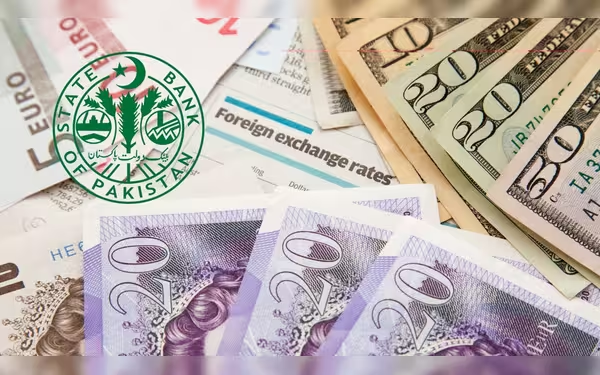Saturday, November 16, 2024 07:42 PM
Pakistan's Foreign Reserves Reach 30-Month High of $15.98 Billion
- Foreign reserves hit $15.98 billion, highest in 30 months.
- IMF funds boost economic stability ahead of SCO summit.
- Potential multi-billion dollar investments from Saudi Arabia.
 Image Credits: thecurrentpk
Image Credits: thecurrentpkPakistan's foreign reserves reach $15.98 billion, the highest in 30 months, bolstered by IMF funds and potential foreign investments.
In recent developments, Pakistan's foreign currency reserves have reached a significant milestone, climbing to $15.98 billion. This figure is noteworthy as it marks the highest level of reserves in 30 months. The reserves are divided between commercial banks, which hold $5.28 billion, and the State Bank of Pakistan (SBP), which retains $10.7 billion. This increase is largely attributed to the inflow of funds from the International Monetary Fund (IMF), providing a much-needed boost to the nation’s economy and signaling a period of short-term stability.
The timing of this financial uplift is particularly crucial as Pakistan prepares to host the Shanghai Cooperation Organization (SCO) summit in Islamabad on October 16-17. This summit is expected to attract foreign investments, which could further enhance the economic landscape of the country. Notably, there are discussions surrounding potential multi-billion dollar settlements from Saudi Arabia related to the Reko Diq mining operation, as well as loans earmarked for the ML-1 railway project. These investments are anticipated to provide immediate relief to the economy, while also influencing the value of the Pakistani Rupee (PKR).
While the rise in foreign reserves is a positive sign, it is essential to approach this development with cautious optimism. The inflow of funds from international partners can indeed provide a temporary cushion against economic challenges. However, it is crucial for Pakistan to implement sustainable economic policies that ensure long-term stability. The reliance on external loans and investments should be balanced with efforts to boost domestic production and enhance export capabilities.
The increase in foreign reserves is a welcome development for Pakistan, offering a glimmer of hope amid ongoing economic struggles. As the country gears up for the SCO summit, it is imperative for policymakers to leverage this opportunity to attract further investments and foster a robust economic environment. The path ahead may be fraught with challenges, but with strategic planning and execution, Pakistan can work towards a more stable and prosperous future.













